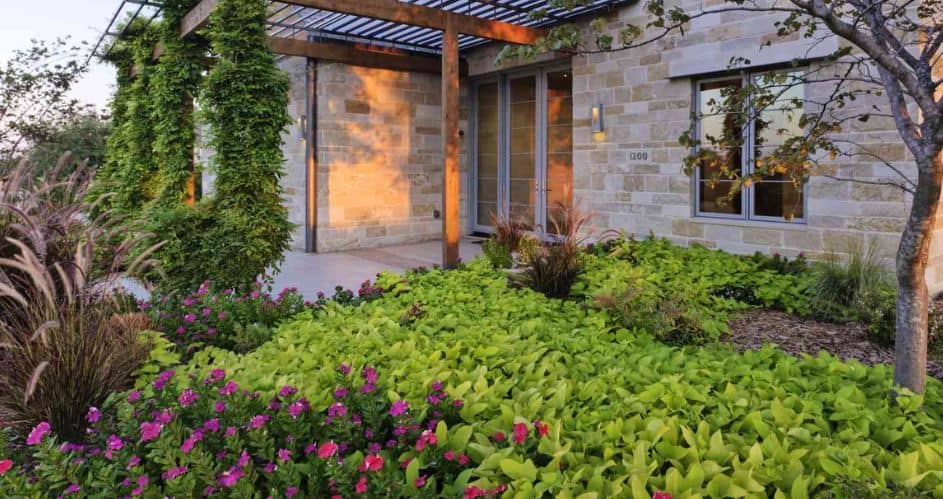
Foundation planting is an often-used technique for using various plants at the perimeter of a home or a building.
Deciding on the proper plants for this function offers visual appeal, boosting your home’s appearance and valuable qualities like insulation and minimization of soil erosion.
Check out the best plants for foundation planting to help take your home’s curb appeal to the next level.
1. Evergreen Shrubs:
Boxwood (Buxus sempervirens):
Some species are well known for their capability in foundation planting due to their evergreen and dense foliage and flexibility.
These can form divisions like hedge fences, carved or uncarved, figure-like topiaries, or be grown to act like green walls all year round. Boxwoods prefer somewhat alkaline, well-drained soils and should be grown partially to the full sun; thus, they require low maintenance.
Japanese Holly (Ilex crenata):
Similar to boxwood, Japanese holly has small and shiny leaves and grows upright as a shrub. This structure plan is best used to form elegant straight lines, and it is ideal for the border of the foundation.
It is an evergreen shrub that can be grown in full sun or partial shade, demanding acidic, well-drained soil.
2. Flowering Shrubs:
Hydrangea (Hydrangea macrophylla):
They are famous for enormous and bright flower heads and may be used to enhance foundation planting, which sets them apart.
Ideally, these shrubs grow well in well-drained loamy soil, but they can also do well in other soil types that are moist but well-drained, and they do well in both full sun and partial shade.
Azalea (Rhododendron spp. ):
They are used primarily for pretty flowers in spring and ornamental features of the foliage. Crymbia is especially great for developing foundation planting because it offers color and interest in the winter.
Azaleas are specifically suitable for planting under trees or differently alongside the blackout of a house because they grow in weakly acidic and well-drained soil. Furthermore, they prefer areas of partial shadiness.
3. Ornamental Grasses:
Feather Reed Grass (Calamagrostis acutiflora):
Feather reed grass remains an excellent choice that can be used to easily incorporate textures and the vertical aspect into your foundation planting.
This attractive ornamental grass grows in tufts of thin, erect, linear, and channeled leaves bearing terminal plumes of feathery flowers, which remain beautiful throughout the winter. This plant likes growing in the loamy soil, requiring full sunlight to partial shades.
Fountain Grass (Pennisetum alopecuroides):
Fountain grass has a tufted, fountain-like appearance of the foliage and plume-like flowering heads, which give the formal appearance to the plants used for the border or foundation planting. It prefers light-textured soil that drains well, is acidic, and has total sun exposure.
4. Ground Covers:
Hosta (Hosta spp. ):
They are plants that grow in low light conditions and have large, beautiful leaves of different colors and designs. It makes them ideal for making fill-ups and laying down a green carpet in and around the base of your home. They like somewhat dry soil but will also grow in wet soil and full shade.
Creeping Jenny (Lysimachia nummularia):
It is an evergreen plant that grows low to the ground and has bright green trailing foliage that can introduce tones of green into your foundation planting.
It is primarily helpful for growing between the larger specimens and can grow in full sun to partial shade. Lysimachia CJejune, commonly called Creeping Jenny, is frost-hardy, prefers to grow well in moist but well-drained soil, and has a vigorous growth rate.
Conclusion:
Therefore, it becomes essential that people make the right choices of plants for their foundation planting to have perfect subjects arising from around the homes.
Evergreen shrubs, flowering shrubs, ornamental grasses, and ground covers can all be used to guarantee an evenly balanced and appealing look to your home’s exterior.
Consider the site conditions of the growing environment and choose the kind of plants suitable for the site based on soil conditions, exposure, and moisture requirements for establishing a sound and picturesque foundation planting.
